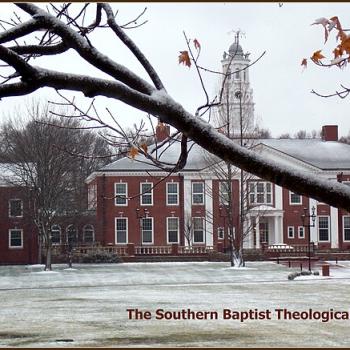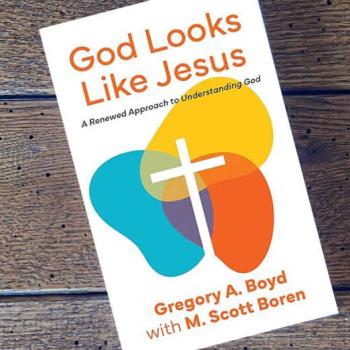I have been reading a relatively new book about the meaning of “image of God” (“imago dei”) concept in Christian theology. It’s title is Dignity and Destiny: Humanity in the Image of God; it’s author is theologian John F. Kilner. It was published by Eerdmans in 2015. So, yes, I’m a little late coming to it.
Kilner’s book is 402 pages long, including the bibliography and index. 330 pages of text. So it’s something of a tome. And it is extremely detailed. That’s a nice way of saying, perhaps, wordy. And some would say it is controversial insofar as it attempts to overturn all traditional Christian theological ideas of the image of God in “man” (humans).
Here is the “gist” of the book: “Being in the image/likeness of God involves humanity’s connection with God…. It also has something to do with the reflection of God—with God’s intention for humanity to be the ‘crowning glory’ of creation, reflecting certain aspects of who God is and what God does.” (39)
Kilner rejects traditional ideas of the image of God as a condition in which some people reflect God more or better than other people. The image of God, for him, is God’s Christ-formed intention for everyone, every human being, to connect with and reflect God. For him, the image of God cannot change; it is not stronger or better or more perfect in some people than in others. That is crucial to his whole project—to undermine traditional ideas that somehow or other some people are more in the image of God than other people. He sees all traditional and contemporary concepts of the image of God as potentially leading to that which results in some people being more valuable than other people.
Kilner admits, as do most biblical scholars and theologians, that the Bible never explicitly defines the imago dei, the image of God in man. It mentions it many times, but the only relatively clear “picture” of it is Jesus Christ. That brings Kilner to suggest that we begin describing the image of God there—with Christ. Christ is the image of God. So, the image of God cannot be damaged by sin. People are damaged by sin, but not the image of God. For the rest of us, who are not Christ, the image of God is God’s intention for us which forms a connection with God and a reflection of God. However, for the rest of us who are not Christ, the image of God “in us” is eschatological.
Why does Kilner’s proposal matter? Well, simply put, because it overturns (or claims to) hundreds, even thousands of years of Christian theological explication of the image of God. As he points out, however, that long project has led only to a great deal of theological disagreement. The mysterious concept of the imago dei has been and still is fodder for numerous doctoral dissertations and books.
If you are at all interested in a simpler, easier to read book about the image of God concept, get a copy of David Cairns’s excellent book The Image of God in Man (1973). Cairns was a Scottish theologian who studied under Emil Brunner in Switzerland.
The real reason, though, that this matters is that Christians have long claimed that the ONLY reason human persons are of infinite value and dignity and worth is because they/we are created in God’s image and likeness. So what is it? And what has sin done to it? Both Cairns and Kilner explore those questions and posit answers.
I teach that we do not know exactly what the imago dei is except that it is our human connection with and reflection of God. There I agree whole heartedly with Kilner. However, I think that connection and reflection is already there, in every human person, and it is simply what makes us more like God than like animals and includes numerous aspects of what it means to be human.
I have for many years held to church father Irenaeus’s and 20th century theologian Brunner’s distinction between two aspects of the imago dei. One that is not damaged by sin and one that is. Here I’ll deal only with Brunner’s. Brunner posited that there is a “formal image” and a “material image.” (The words don’t really matter.) The formal image of God is our human ability to hear and respond to God with the result that we can have a relationship with God; we are created for that. The material image is actually having a right relationship with God, communion and fellowship with God. The formal image cannot be lost or damaged; the material image is damaged by “the fall” such that by nature, without grace, we do not have communion and fellowship with God. However, according to Brunner, every human being is of infinite value and worth and dignity because he or she is in the formal image of God.
Kilner rejects Brunner’s view as he rejects so many, virtually all, concepts of the image of God but his own (although he admits some theologians have anticipated if not quite arrived at his view).
A problem I have with Kilner’s view, insofar as I understand it, is that it seems to undermine the idea that all humans are actually “in” the image of God here and now. Yes, we are all intended to be in the image of God, but the image of God seems to him to be something like a Platonic form. It is the truth about us, in some sense, but it is so far veiled. How his view ends up being really, substantively different from Brunner’s is unclear to me. Yet, it is insofar as he makes the imago dei a divine intention and not an ontological fact already, always in every human being.
I think chasing a clear definition and description of the image of God is futile. The Bible never defines it and all attempts to define it involve some degree of speculation. Which of the numerous views has the least problems and the best potential for doing two things? Brunner’s view. It explains how the imago dei is always already “there” in every human person AND how it is damaged due to sin. If Kilner is right, it is not at all damaged due to sin.
*Note: If you choose to comment, make sure your comment is relatively brief (no more than 100 words), on topic, addressed to me, civil and respectful (not hostile or argumentative), and devoid of pictures or links.*














